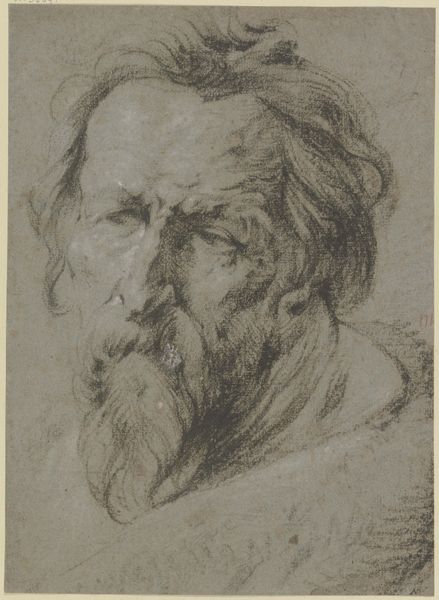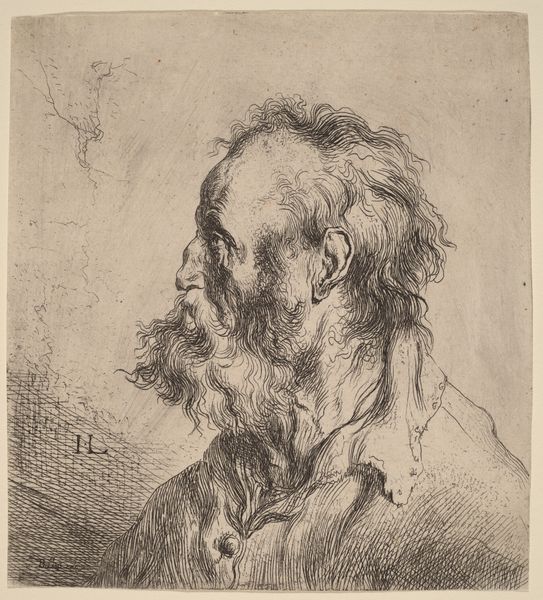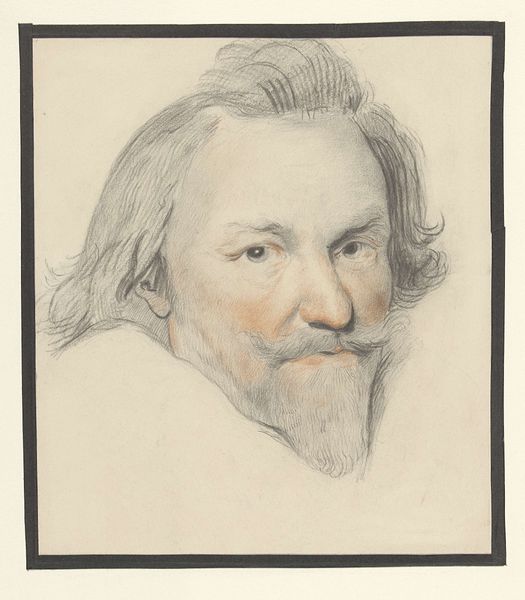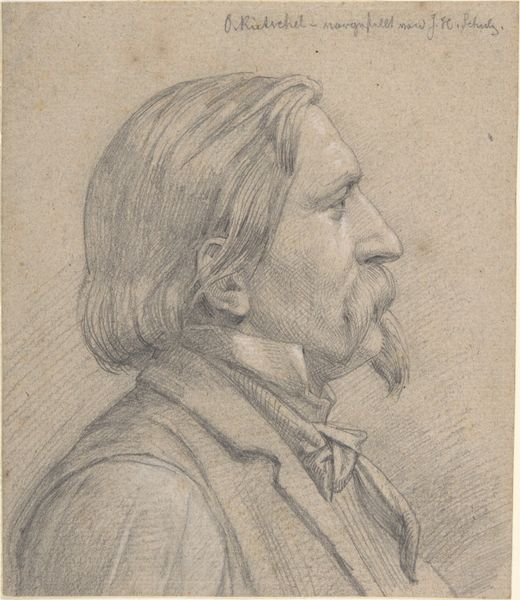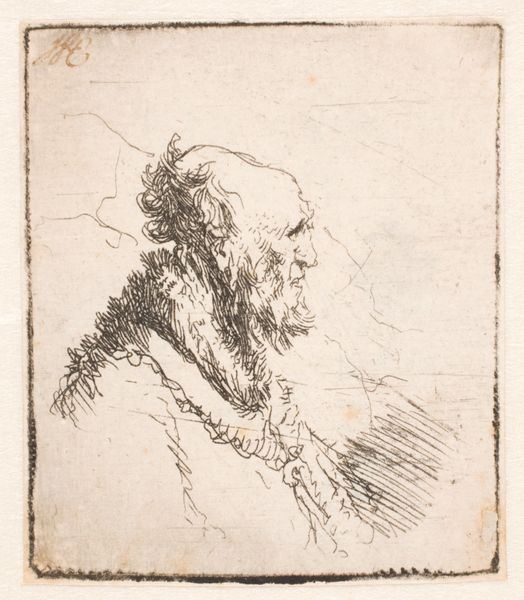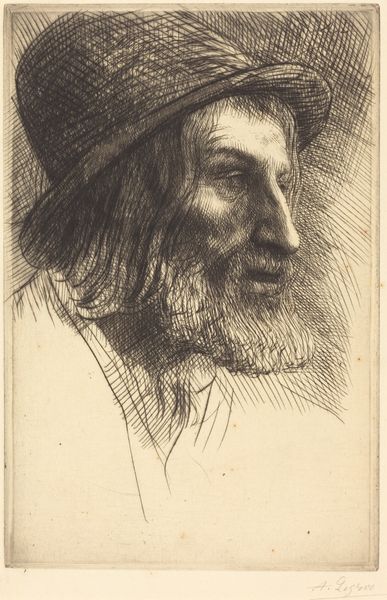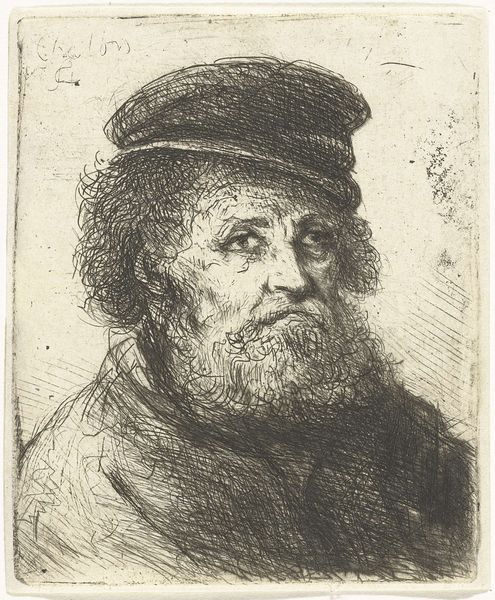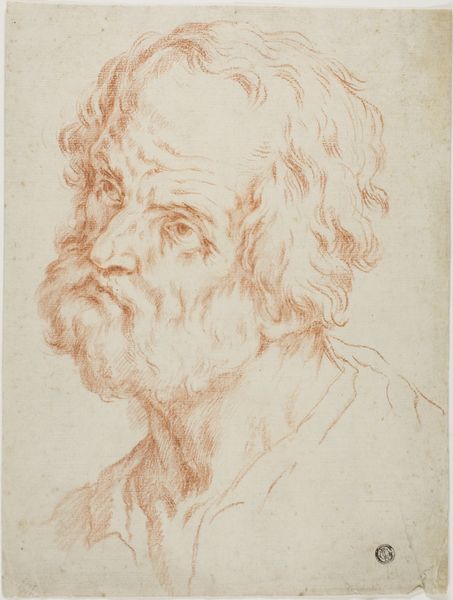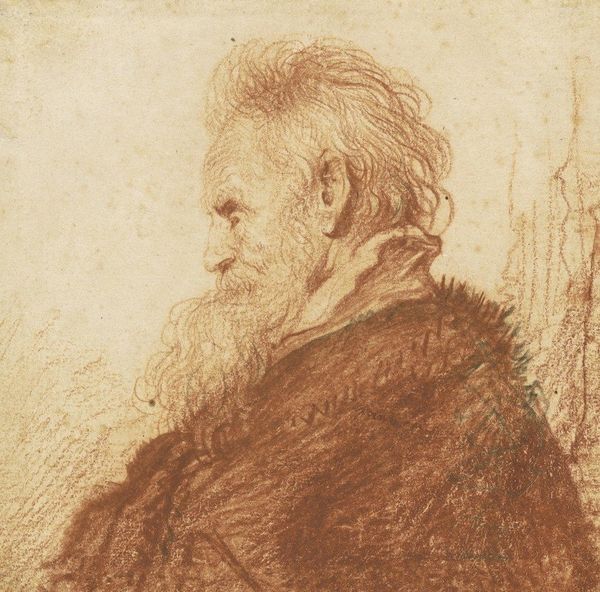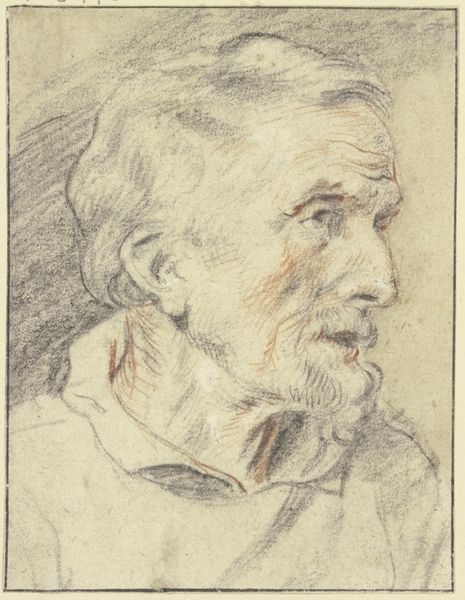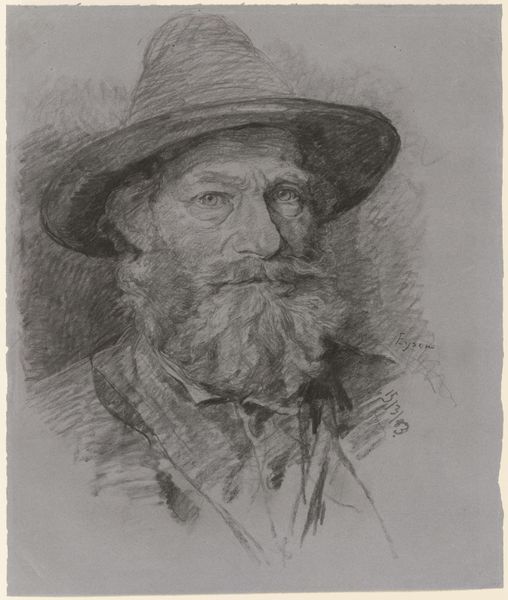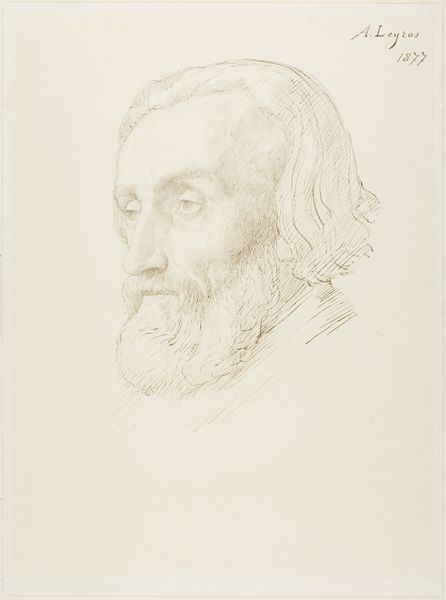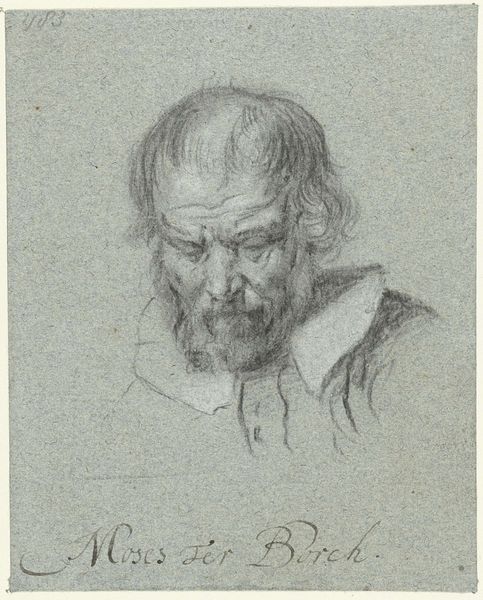
drawing, print, gouache, paper, chalk, graphite
#
portrait
#
drawing
# print
#
gouache
#
paper
#
chalk
#
water
#
graphite
#
portrait drawing
#
academic-art
#
italy
#
portrait art
#
fine art portrait
#
realism
Dimensions: 312 × 243 mm
Copyright: Public Domain
Curator: Ah, "Study" by Giuseppe Nogari, undated, a piece that offers us insight into 18th-century Venetian artistic practices. Editor: Immediately, what strikes me is the ochre tone and the flowing, almost wistful quality of the lines. The man's eyes have such character. It's an intimate glimpse into his very being. Curator: Absolutely. We see Nogari working with gouache, graphite, and chalk on paper to create this expressive portrait. Consider, too, how the artist is not simply rendering an individual likeness. It prompts reflection on age, wisdom, and social hierarchies of the time. The academic-art style places it squarely within a European tradition of representing power through portraiture. Editor: It's that 'age, wisdom, and social hierarchies' that make it more than a portrait, though. His gaze almost pierces through you; he’s known struggle. This isn't a glorified depiction but feels very... honest. Raw, almost. Curator: I think the raw quality that you perceive really lies in how he likely made use of the “poverty portrait” trend during the era, depicting elderly men as a lesson to the viewer of their inevitable doom, as a reminder to perform Godly acts to enter Heaven after death. Editor: Ah! So almost memento mori. Despite the social critique and the religious framework... there's also an undeniably human element. It's melancholic, yet there's this stubborn resilience etched in his face. The wrinkles, the droop of the eyes. Curator: Exactly. He is neither glorified nor demonized; Nogari meets him where he is. This piece isn’t just a snapshot; it reflects complex systems of faith and social justice during this moment. Editor: Knowing Nogari’s intentions, and seeing this as more than a rendering of the face but one of mortality, I almost want to rewrite the man’s story, give him a happy ending after all that is assumed to be faced. Curator: Precisely, it’s that intersection between then and now, that dialogue between creator, subject, and viewer that keeps Nogari's "Study" relevant centuries later. Editor: Definitely gives a modern viewer much to think about... Thank you.
Comments
No comments
Be the first to comment and join the conversation on the ultimate creative platform.
